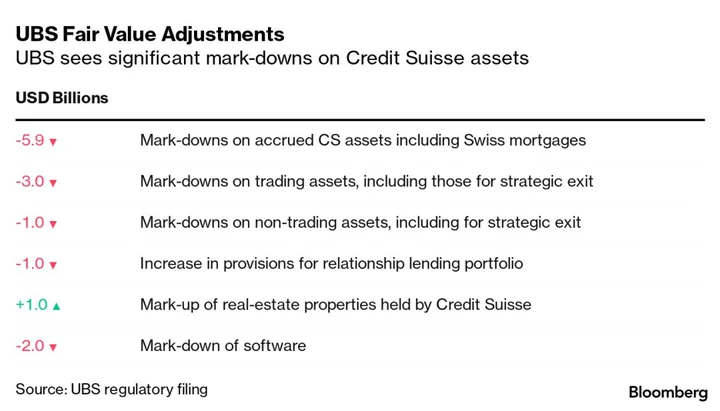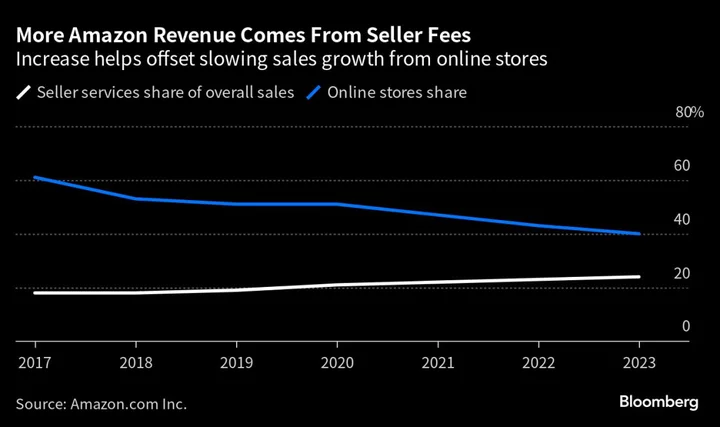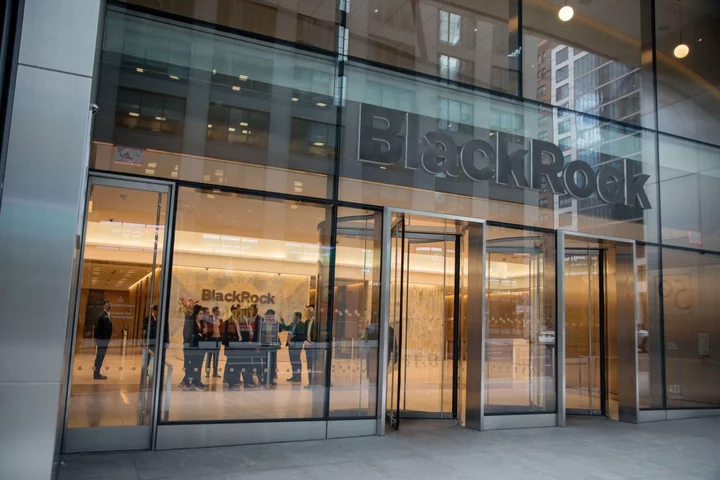UBS Group AG sealed an agreement with the Swiss government to cover 9 billion francs ($9.9 billion) of losses it could incur from the rescue of Credit Suisse Group AG, clearing a major hurdle to closing the historic takeover.
The accord was signed on June 9 and will cover a specific portfolio of Credit Suisse assets, corresponding to about 3% of the merged banks’ combined assets, the government said in a statement on Friday. That represents about 44 billion francs.
The deal removes one of the final blockages to the $3.3 billion takeover, brokered by the government in March as Credit Suisse hurtled toward bankruptcy. UBS had pushed for protection from hard-to-predict losses from a set of its former rival’s assets it plans to wind down or sell. The Swiss bank said recently that the deal’s close could come as soon as Monday, creating a financial titan twice the size of the Swiss economy.
Under the terms, UBS will assume the first 5 billion francs of losses, with the government stepping up to take on the next 9 billion. The portfolio of assets to be covered includes primarily loans, derivatives, legacy assets and structured products from Credit Suisse’s non-core unit.
A net approach will be taken when calculating losses, meaning any profits from the portfolio will also be taken into account. The government said it and the bank’s “priority” is to minimize losses and avoid using the loss backstop as much as possible. UBS Chief Executive Officer Sergio Ermotti also said recently that losses for the state in the deal are “exceptionally unlikely.”
The agreement remains in place until the final wind-up of the portfolio and will see UBS pay the government various fees for the backstop, including an initial set up fee of 40 million francs as well as an annual fee of 0.4% of the 9 billion francs.
Government Say
The government is set to have some say in how the assets are managed, and will also have a seat on a newly-formed oversight committee, UBS said earlier this week. The bank has to keep its headquarters in Switzerland to receive payment under the loss protection deal.
UBS is also benefiting from a more than two year grace period before Switzerland imposes higher capital requirements related to the takeover. An increase in capital triggered by the combined bank’s larger size will be phased in from early 2026.
UBS is also receiving a number of other regulatory benefits, including temporarily being allowed to use some rulings that applied to Credit Suisse as well as keeping its current rules for liquidity. Both banks will be able to continue their current methods of calculating risk-weighted assets.
UBS has about three months to provide the government with a business plan proposal for how it will wind down the assets covered by the guarantees and the expected net loss amounts. The five-year plan needs to include financial projections, a capital plan with risk-weight asset forecasts, and exit and unwinding strategies.
The two parties also have 90 days after the deal closes to assess whether they need to add or remove items from the identified pool of assets for winddown. After that, UBS can submit a request to the government to remove other assets if it deems that there would be more value in keeping it and selling it or winding it down would bear a net loss. The government must agree.
(Adds details on accord from sixth paragraph)









